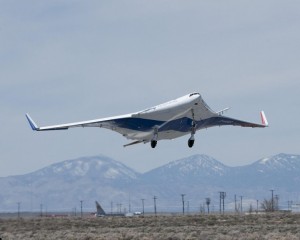Anyone who’s ever needed a pair of thick eyeglasses has a firm idea that lenses are the one thing where form follows function. However, BAE Systems and Queen Mary’s School of Electronic Engineering and Computer Science in London have put paid to that idea with a flat lens that works like a conventional curved lens, yet without any reduction in bandwidth performance. Using a combination of composite metamaterials and transformational optics for the first time, they have created a lens that’s able to bend electromagnetic waves, yet isn’t bound by its shape for its function.
works like a conventional curved lens, yet without any reduction in bandwidth performance. Using a combination of composite metamaterials and transformational optics for the first time, they have created a lens that’s able to bend electromagnetic waves, yet isn’t bound by its shape for its function.
Lenses, antennas, and similar things that bend and focus electromagnetic waves are obviously useful things. But sometimes a lens that looks like a lens or an antenna that looks like an antenna can be a liability. It can interfere with the streamlining of an airplane wing or make a stealth vehicle less stealthy in ways that are much more than trivial, for example.
Ideally, the way to handle this sort of setback is to come up with something that works like a lens, but doesn’t need the shape of a lens. One solution is to use the seemingly magical properties of metamaterials. These are materials made out of elements that should work one way, but the way in which they’ve been fabricated makes them operate in another. They are ordinary substances that have been engineered with precisely designed and fabricated microscopic structures. These structures interact with light or sound in such a way that they produce effects that are not found in nature. One example is a metamaterial lens developed by MIT, that has a concave shape that should spread radio waves, but focuses them instead.
This might do the job, but metamaterials usually only work over a narrow band of frequencies, which limits their performance. BAE and Queen Mary’s approach is to combine metamaterials with transformation optics, which, put very simply, use the geometry of the microstructures in the lens instead of traditional optics to bend electromagnetic waves. By using both of these approaches, the result is a lens that works over a broad bandwidth with high performance.
According to the partners, the ability to make lenses that are flat (or that are made in other shapes) could revolutionize the design of aircraft, ships, radios and satellite dishes by allowing for lenses and antennas that can fit seamlessly into the skins of aircraft and other vehicles. Based on this new development, the partners say they will continue to develop and understand how transformation optics and metamaterials can be applied in the defense, security and aerospace sectors.
“It’s possible in the future that this research could contribute to the production of even smaller or discrete antennas,” says Professor Yang Hao from Queen Mary’s School of Electronic Engineering and Computer Science. “This could be useful in all walks of life from telecommunications to healthcare. We’re very pleased that this joint effort between academia and industry has overcome many restrictions on antenna design.”






